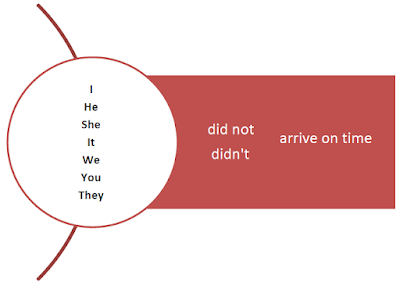EXCEPTIONS
1. For verbs that end in an "e", we only add "-d".
Ex .: reduce reduced
believe believed
2. If the verb ends in consonant-vowel-consonant (except "y" or "w") and also the last syllable is tonic, we double the final consonant.
Ex: drag dragged
crop cropped
but listen -> listened
3. With verbs that end in a consonant and a "y", the "y" is changed to an "i".
Ex: modify modified
fry fried
IRREGULAR VERBS
The simple past in irregular verbs does not have a definite norm for all verbs, so it is necessary to learn them individually. It is important to keep in mind that this irregular form is only used in affirmative phrases. In the negative and interrogative sentences they work just like regular verbs.





